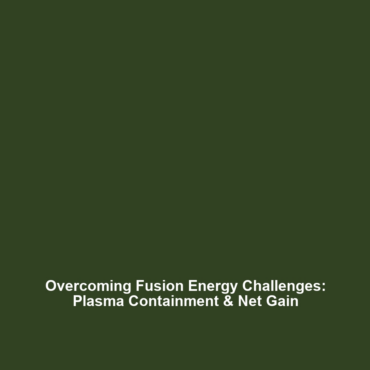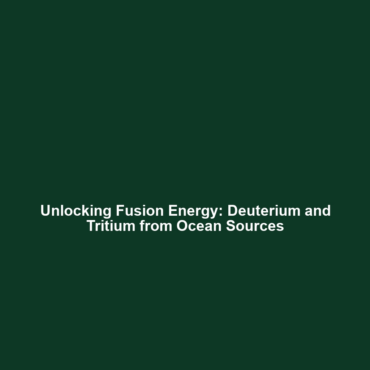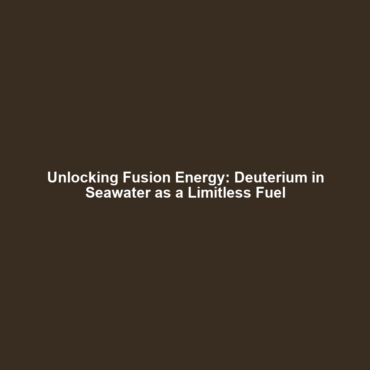Challenges in Fusion Energy: Cost, Construction Delays, and Technical Hurdles
Fusion energy has long been hailed as a potential solution to the world’s energy crisis, promising a clean, virtually limitless source of power. However, the quest to harness fusion energy is fraught with significant challenges, including high costs, persistent construction delays, and complex technical hurdles such as managing plasma stability and heat exhaust. Understanding these challenges is crucial for advancing fusion as a viable energy alternative.
Key Concepts in Fusion Energy Challenges
Within the landscape of fusion energy, the challenges related to cost, construction delays, and technical issues are interlinked by several key concepts:
Cost of Fusion Energy Development
The economic feasibility of fusion energy is a critical barrier. Current estimates indicate that developing commercial fusion reactors could require billions of dollars in funding, raising concerns over attracting investment.
Construction Delays
Fusion projects often face extended timelines due to engineering complexities and regulatory hurdles. For example, projects like ITER have experienced delays that push back projected completion dates.
Technical Hurdles
Managing plasma stability is fundamental to sustaining fusion reactions. The high temperatures and pressures required create difficulties in controlling the reactive plasma, leading to challenges in heat exhaust management.
Applications and Real-World Uses
The application of fusion energy technology is largely theoretical at this stage; however, addressing the challenges such as cost and plasma stability could pave the way for groundbreaking applications:
- Energy Production: If resolved, fusion energy can provide a continual and reliable source of energy.
- Medical Applications: Technologies developed for plasma management and heat control may lead to advancements in medical imaging and treatments.
- Space Exploration: Fusion energy could revolutionize space travel, offering a long-lasting power source for spacecraft.
Current Challenges in Fusion Energy
Despite considerable progress, several challenges remain in studying and applying the principles associated with the cost, construction delays, and technical hurdles of fusion energy:
- Funding Shortages: The high cost of research and development often leads to inadequate funding.
- Technological Limitations: Existing technologies struggle to effectively manage plasma stability and heat exhaust.
- Regulatory Barriers: Stringent regulations can slow down project approvals and implementation.
Future Research and Innovations
Next-generation technologies and research initiatives are essential to overcoming the challenges associated with fusion energy:
- Innovative Plasma Solutions: Researchers are exploring new methods to stabilize plasma, which could significantly reduce operational risks.
- Advanced Materials: Development of heat-resistant materials could improve heat exhaust management.
- Investment Models: New funding strategies are being considered to attract and maintain investor interest.
Conclusion
In summary, while the challenges of cost, construction delays, and technical hurdles such as managing plasma stability and heat exhaust are considerable, they are not insurmountable. Addressing these issues is vital for the future of fusion energy as a sustainable power source. Continued research and innovation hold the key to unlocking the potential of fusion energy, leading to far-reaching benefits for society.
For more insights into the world of fusion energy and its developments, consider reading related articles on nuclear fusion technology and its global impact.









